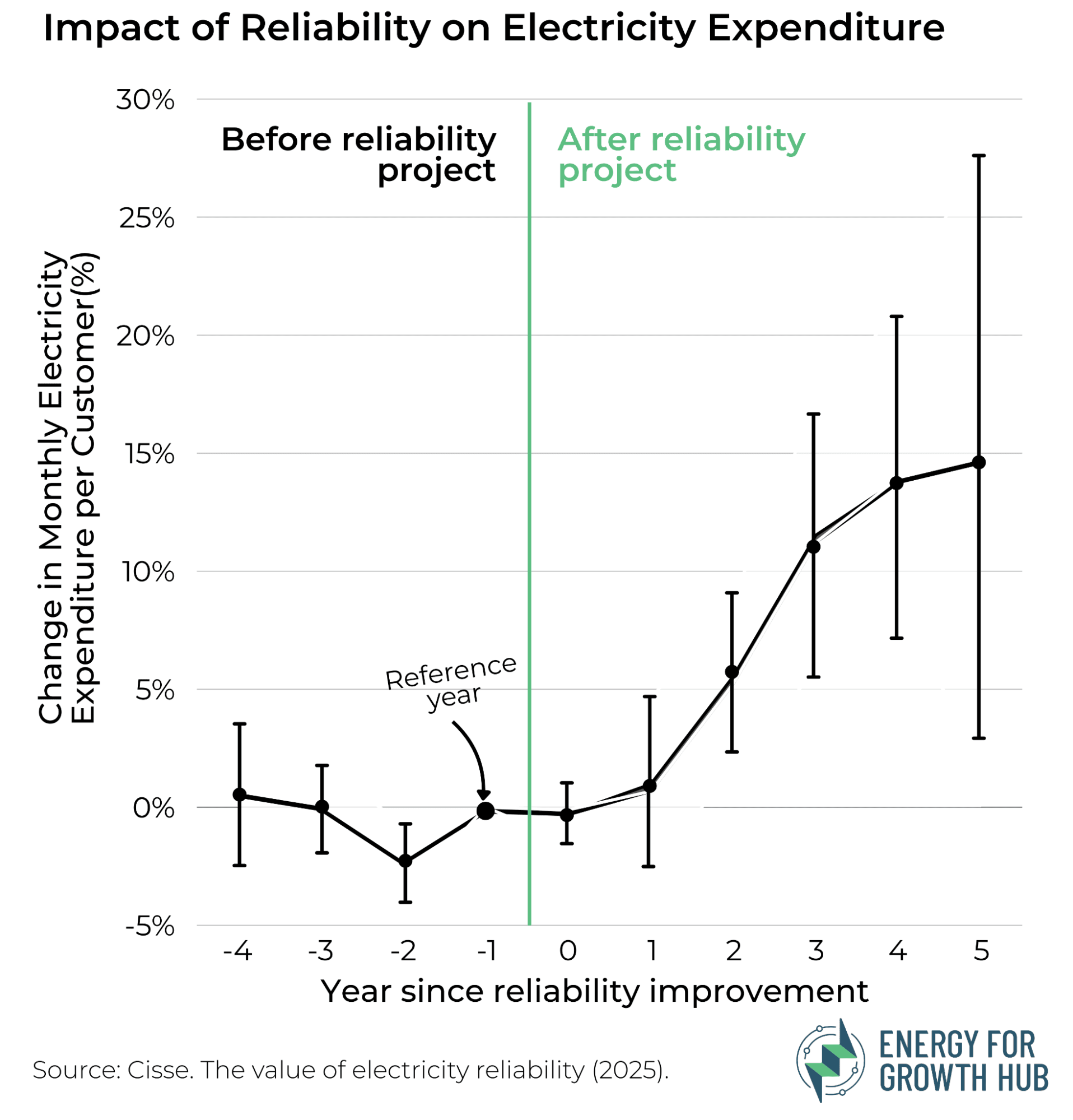Special thanks to Dr. Abdoulaye Cisse for input and revisions.
Why this matters
Policymakers across Africa face a chicken-and-egg dilemma: unreliable power drives customers to leave the grid or refuse to pay, but those same losses starve utilities of the revenue they need to improve reliability. To fill this gap, governments rely on subsidies, which strain local budgets and increase borrowing as quality of service declines. This research shows that improving reliability through relatively low-cost interventions actually raises revenue, providing one path to break the cycle of poor power service and utility revenue loss.
The Context: Utility financial distress is eroding service and strangling economies.
Utilities across sub-Saharan Africa face a long list of investment needs that far exceed their available resources. Senegal provides a stark example. The high cost of service (≈$0.25/kWh) is driven both by 60% liquid fuel generation and operational inefficiencies.1 In 2022, SENELEC’s revenue accounted for just 61% of operating cost and debt service. Despite high consumer prices, subsidies totaled $458 million in 2023 to cover the difference. SENELEC’s reliability ranks in the middle of the pack for sub-Saharan Africa and still well below global benchmarks, showing strong improvements from 2017 to 2020, with some backsliding from 2020 to 2022.
New study in Senegal reveals reliability investments increase demand and willingness to pay:
The economic benefit of reliability investments has been well studied. However, quantifying what customers are willing to pay for it is less clear.
A new study using over 125 million electricity bills from 2 million customers allowed Dr. Cisse to attribute increases in electricity demand, appliance ownership, and willingness to pay to SENELEC’s reliability enhancements. Instead of using stated preference-based surveys that often lead to biased demand estimates, this study reveals the actual price that Senegalese customers place on reliability through their behavior.
The findings are striking.
- Reliability investments totaled far less than subsidy payments. SENELEC installed remote terminal units at an average estimated cost of around $10,000 each. In total, SENELEC’s annual investment in the RTUs between 2016-2023 is estimated to be a few percent of the annual electricity subsidy.
- Reliability investments reduced outages and increased consumption. This intervention helped reduce electricity outage duration by 40% (from a baseline of 16 hours per month), increased electricity consumption by 8%, and led to greater appliance ownership and lower disconnection rates.
- Customers were willing to pay more for better reliability. Consumers were willing to pay an average 10% more for an additional hour of grid electricity, from a baseline of $0.90 for peak hours and $0.07 for off-peak hours. The gains were significantly larger for poorer consumers, rural households, and during peak hours.
- Low-cost reliability improvements boosted revenue. The study found more than a 25% rate of return on investment for SENELEC’s relatively modest reliability interventions.

The message to utilities is clear: Reliability investments pay off.
The Senegal case study reveals that customers will pay more for more reliable power. Many utilities can accomplish this and boost their revenues through low-cost reliability upgrades. Studies looking at other markets confirm these insights. A study in California found households are willing to pay more for battery storage that helps to avoid wildfire-related outages. And recent research in India and Africa reveals significant grid electricity preference over off-grid solar when reliability issues are eliminated. The resounding message to decision makers and utility leads in sub-Saharan Africa is this: enhancing reliability pays off.

